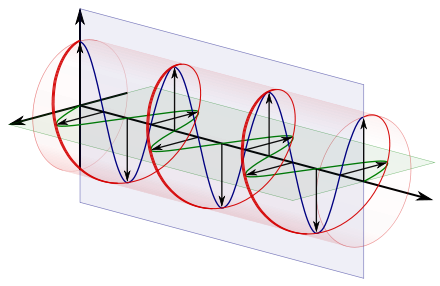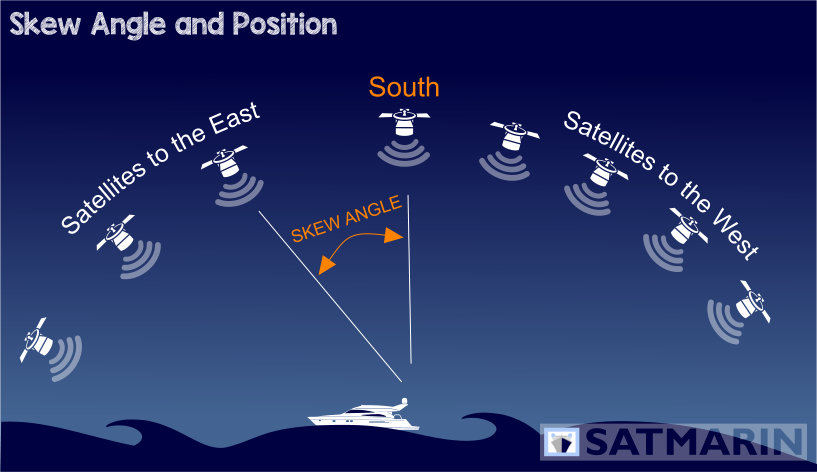Satellite TV
Satellite television is a service that delivers television programming to viewers by relaying it from a communications satellite orbiting the Earth directly to the viewer’s location. The signals are received via an outdoor parabolic antenna commonly referred to as a satellite dish and a low-noise block downconverter (LNB).
A satellite receiver then decodes the desired television programme for viewing on a television set. Receivers can be external set-top boxes, or a built-in television tuner. Satellite television provides a wide range of channels and services. It is usually the only television available in many remote geographic areas without terrestrial television or cable television service.
Modern systems signals are relayed from a communications satellite on the Ku band frequencies (12–18 GHz) requiring only a small dish less than a meter in diameter.
Early systems used analog signals, but modern ones use digital signals which allow transmission of the modern television standard high-definition television, due to the significantly improved spectral efficiency of digital broadcasting.
Different receivers are required for the two types. Some transmissions and channels are unencrypted and therefore free-to-air or free-to-view, while many other channels are transmitted with encryption (pay television), requiring the viewer to subscribe and pay a monthly fee to receive the programming
To receive Satellite TV at Sea you will need a Maritime Stabilized Satellite TV Antenna. This antenna will point to the satellite regardless of the movements of the ship it is on and will do this very accurately. Keep in mind that the satellite is at approximately 35.000 km distance. So you could compare it to shooting through a keyhole with a laserpointer while sitting on a mechanical bull. Not easy if you have to do this manually and this is why there are different antennas for different environments.
Antenna Size
Usually the size of the antenna is determined by the size of the ship it will be installed on. Larger ships will have larger antennas and smaller ships smaller. This is mostly due to space and budget but can have aesthetic reasons as well.
Larger antennas receive more signal and will allow you to watch TV in more remote areas or in worse weather conditions than the smaller versions. You should therefore always try to get the largest possible antenna on your ship.
Circular or Linear Polarization
Satellite TV signals are transmitted orthogonally, which means that from the satellite signals are sent horizontally and vertically. This is usually the case in EMEA and Asia. They can also be circular, which means the signal rotates with or counter clockwise. This is more common in the US.

When selecting an antenna for reception of orthogonal signals (horizontal or vertically polarized) then the angle of the of the satellite receiver will become very important. If the skew angle is incorrectly set, which depends your position and the selected satellite, your TV signal will be poor. A 10° error can already make the difference between a good image and no image. More about this when talking about the choice of 2 or 3 axis antennas.
First of all the polarity is important to choose the right LNB (Low Noise Block Down Converter – the receiver). Depending on the region you will sail in you will select either Orthogonal or Circular polarization. For larger vessels who frequenctly need to switch from Circular polarization to Orthogonal you should consider an antenna with the ability to switch between both (Intellian t110W and t130W)
2-Axis or 3-Axis antennas
2-Axis antennas are for ships that don’t move heavily (rivers, lakes, in harbour, calm sea, …). The antenna will move around its azimuth (yaw) and elevation (pitch) axis and will usually have a manual or automatic skew adjustment.
So why would you need a 3 axis antenna.

Skew Adjustment: In a 2-axis antenna your skew angle will not move along with the roll or pitch of your ship. If this becomes big (remember the 10° angle when we talked about Orthogonal polarization) then your receiver will not be well aligned with the satellite signal and you will have permanent or intermittent less than optimal signal reception.
If you are going to watch TV at sea during heavy sea then it is recommended to choose a 3-axis antenna which will be able to receive a stronger signal than its same size 2-axis counterpart because of the use of the 3rd cross (roll) axis.
Skew adjustment = ability to adjust the receiver to your geographic location so that the receiver is set parallel to the signal. This only changes when your location changes (by more than tens of kilometers)
Beware: Some manufacturers will advertise 2-axis antennas with automatic skew as a 3-axis antennas. This is not the same as real 3-axis antennas which should then be called 4-Axis (yaw, pitch, roll AND skew)
Regional Satellite TV
Most satellite TV services are regional in nature as they cater to a specific country, region or language. To discover which stations are available on which satellites and which satellites you can use in your region we recommend sites like www.satbeams.com and www.lyngsat.com. These website contain information on most current constellations and packages.
Global Satellite TV
Global Satellite TV packages are rarely available in Ku Band due to their regional coverage (and media rights). If you need global satellite TV service then you will need to either find a service which transmits worldwide (most likely in C-Band) but hese solutions require much larger antennas and the services are not as widely spread as the regional Ku Band TV packages.
If streaming is not an option, and it usually isn’t on ocean going merchant vessels, then you probably will have to change to another provider depending on the region you will be sailing to. With some preparation you will be able to find some satellites which cover your routes and you can then use their free-to-air or pay-tv packages. Once out of the coverage of one satellite you will however need to switch to the next satellite.
IPTV Streaming via Internet
An alternative to receiving TV via a satellite TV provider is to transfer the images as a data stream via VSAT (or other high speed connection) and to encode them to be viewed on a regularTV (or if you have a smart TV use them directly).
IPTV offers the ability to stream media – video and/or audio – on different devices like TV, tablets and smartphones using the Internet connection supplied by the service provider.
This solution is extremely flexible but requires quite a bit of bandwidth to transfer the images, especially HD which can require up to 8Mbps.
OTT services like Netflix and nowadays many TV stations offer a view when needed download service and can be used over a data connection as well (with the same data volumes required).
Keep in mind that these services, when not managed properly will try to use as much bandwidth as possible to increase image quality. Streaming a movie on a phone conected to the ship’s network probably does not need 4K resolution, but the device may very well try to use that much. If you think this might be happening then take a look at our bandwidth management solutions.
Head-End solutions to distribute TV signal
Installations requiring more than just a few TV sets will need to use specific switching equipment to distribute the signal to all sets without losing quality.
The requirements for SAT-IF distribution technology become increasingly more diverse and more complex. In addition, customers become even more demanding and require central solutions.
With our specialist and practice-orientated know-how across brands and manufacturers we guarantee a fast effective solution to problems and a high degree of satisfaction.
By using up-to-date CAD planning software we offer you specifically customized solutions tailored to commercial sized major installations.
